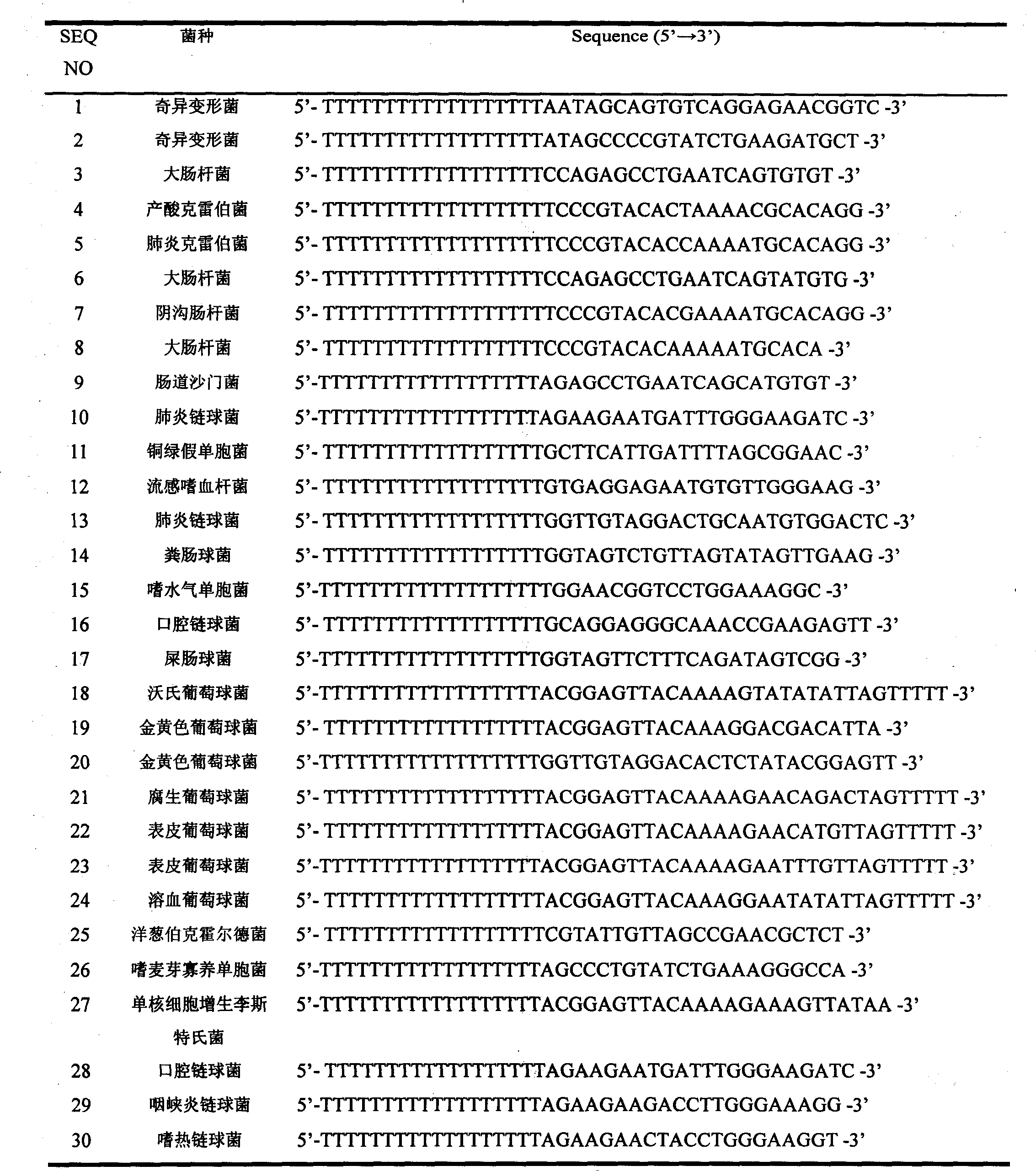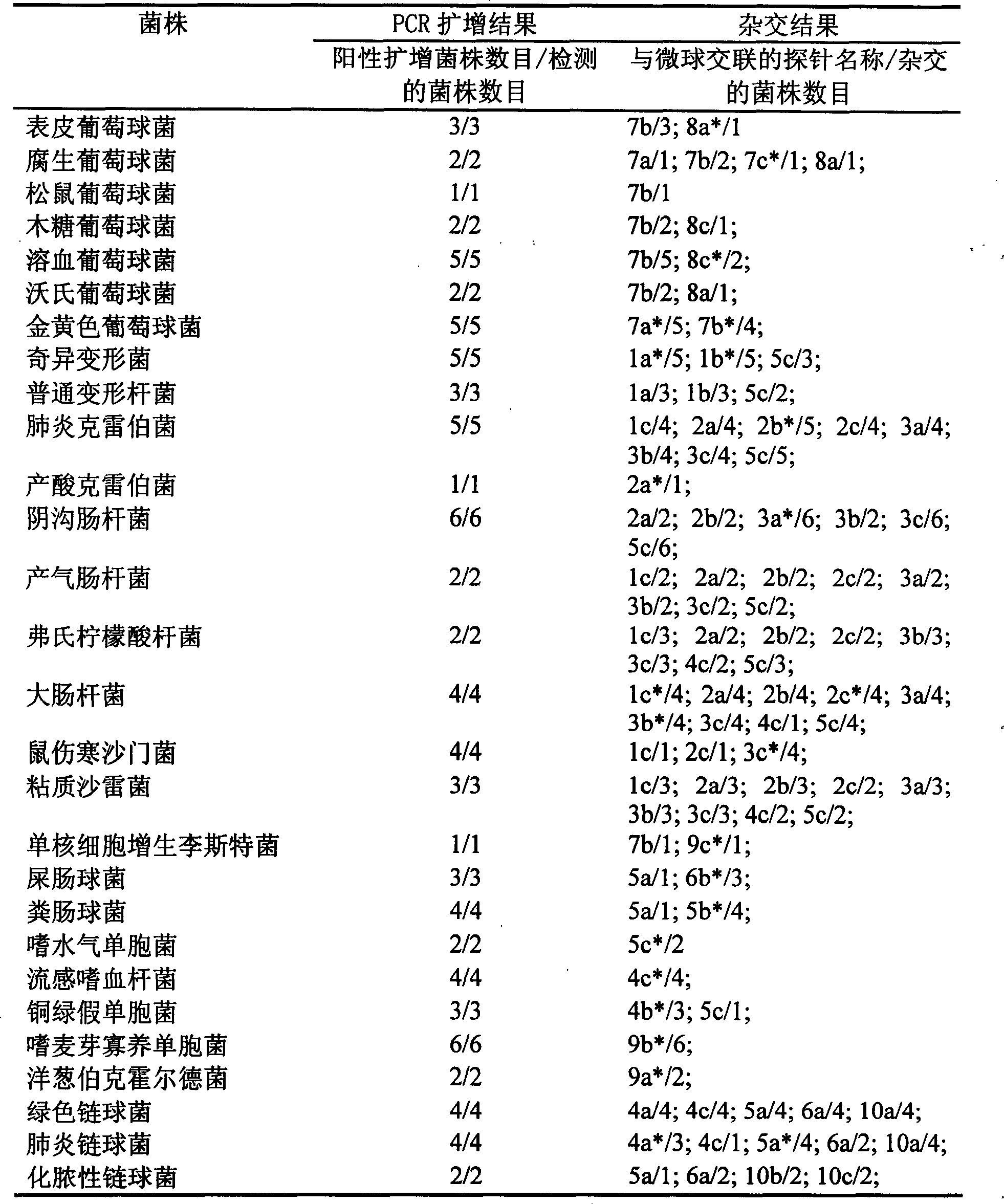Method for identifying 28 frequent phathogenic bacteria for clinical bacteremia
A pathogenic and specific technology, applied in the fields of molecular biology and biochemistry, can solve the problems of being unable to adapt to the ever-changing needs of patients, difficult to strictly control the experimental conditions, and the long time required for detection, so as to achieve reliable detection results, The effect of shortening the detection time and speed
- Summary
- Abstract
- Description
- Claims
- Application Information
AI Technical Summary
Problems solved by technology
Method used
Image
Examples
Embodiment Construction
[0030]1. Collection of strains: Most of the 91 purely cultured strains used were clinical isolates and were collected from the Affiliated Hospital of Zhejiang University from April 2004 to August 2005. Including 6 standard strains, namely Klebsiella pneumoniae (ATCC700603), Escherichia coli (ATCC25922), Enterococcus faecalis (ATCC29212), Pseudomonas aeruginosa (ATCC27853), Staphylococcus aureus (ATCC25923), monocyte Listeria monocytogenes (NICP BP54001). ATCC refers to the American Culture Collection; NICPBP refers to the National Institute for the Control of Pharmaceutical and Biological Products.
[0031] 2. Obtain strain DNA
[0032] Pick a single colony and put it in 50 μl extraction lysate (10mM Tris-HCl pH value 7.6, 5mM EDTA, 0.5% SDS, 0.22μm membrane filtration treatment), boil at 100°C for 10min, centrifuge at 12000r / min for 5min, take 2μl supernatant as PCR template.
[0033] 3. 23S rDNA amplification and labeling of strains to be tested
[0034] What PCR reactio...
PUM
 Login to View More
Login to View More Abstract
Description
Claims
Application Information
 Login to View More
Login to View More - R&D
- Intellectual Property
- Life Sciences
- Materials
- Tech Scout
- Unparalleled Data Quality
- Higher Quality Content
- 60% Fewer Hallucinations
Browse by: Latest US Patents, China's latest patents, Technical Efficacy Thesaurus, Application Domain, Technology Topic, Popular Technical Reports.
© 2025 PatSnap. All rights reserved.Legal|Privacy policy|Modern Slavery Act Transparency Statement|Sitemap|About US| Contact US: help@patsnap.com



